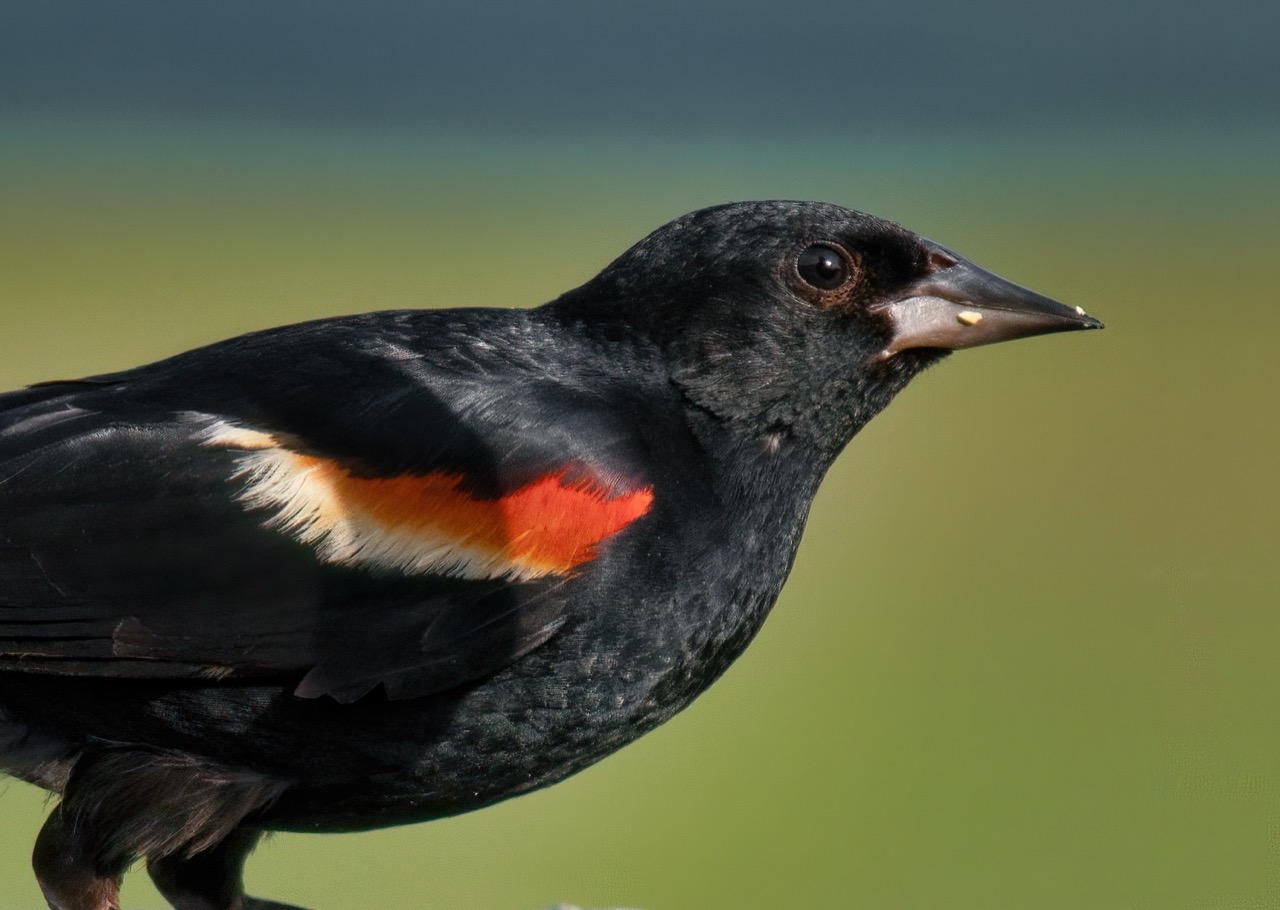The red-winged blackbird, a familiar sight in the marshes and meadows across North America, is a species as intriguing as it is common. Its stark black plumage contrasted by vividly colored shoulder patches makes it a distinctive feature against the greens and browns of its natural habitat. The visual appeal of the red-winged blackbird, however, is just the tip of the iceberg. This bird’s complex behaviors, adaptability, and vocal abilities make it a fascinating subject for both casual birdwatchers and serious ornithologists.
Characteristics / Physical Description
The red-winged blackbird (Agelaius phoeniceus) is a medium-sized songbird with a striking appearance. Males are predominantly black with a glossy hint in good light, showcasing bright red and yellow shoulder patches they can puff up or hide depending on their behavioral needs. Females, on the other hand, are more subdued in color, displaying a speckled brown and white pattern that camouflages them well with their surroundings. This sexual dimorphism is common among many bird species where males need to be conspicuous to attract mates and fend off competitors, while females require stealth to protect themselves and their nests.
Taxonomy and Classification
Belonging to the family Icteridae, which includes various blackbirds, grackles, cowbirds, and orioles, the red-winged blackbird is a well-studied species in North America. Its closest relatives include other members of the genus Agelaius, as well as more broadly related species in the Icteridae family known for their diverse sizes and habits.
Behavior and Social Structure
Red-winged blackbirds are highly social creatures outside of the breeding season, often seen in large flocks that can number in the hundreds of thousands. These flocks are a mix of several species of blackbirds and starlings. During the breeding season, males become territorial and are often seen perched on high reeds and bushes, singing their conk-la-ree song to ward off intruders and attract females.
Habitat and Distribution
This bird occupies a range of habitats but is most commonly associated with wetlands, marshes, and meadow areas near bodies of water. Its distribution spans across North America, from Alaska and Canada down through the United States to Central America, thriving in both pristine and altered landscapes as long as there is standing water and ample vegetation.
Diet and Feeding Habits
The diet of the red-winged blackbird is omnivorous, consisting primarily of insects, seeds, and grains. They adapt their feeding habits to the availability of food sources in their environment, often visiting farmlands and rice paddies where they are sometimes considered pests.
Breeding and Reproduction
The breeding behavior of red-winged blackbirds is particularly interesting. Males are polygynous, often having several females within their territory. Females build the nests, which are cup-shaped and located in dense marsh vegetation to protect against predators. They typically lay 2-4 eggs per clutch, which they incubate for about two weeks before the chicks hatch.
Relationship with Humans
While sometimes seen as agricultural pests, red-winged blackbirds also play a beneficial role by controlling insect populations. Their presence in diverse habitats makes them excellent indicators of ecological health. However, they are affected by pesticide use and habitat destruction, though their population numbers remain robust.
Evolutionary History
Red-winged blackbirds are believed to have evolved in North America, with fossil records and genetic studies suggesting a history that spans several million years. Their adaptability to different environments has been a key factor in their survival and widespread distribution.
Ending on a note of admiration, the red-winged blackbird not only captivates those who observe it but also plays a crucial role in the ecosystem. Its resilience and adaptability make it a species worth protecting and appreciating in our natural world.

